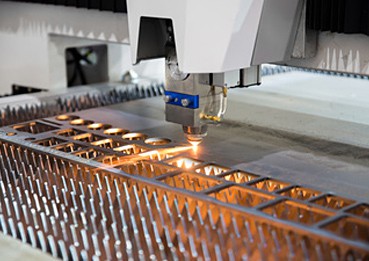Within the quickly changing landscape of manufacturing, the adoption of cutting-edge technologies signals the beginning of the fourth industrial revolution. Amongst the innovations transforming the industry, smart cutting techniques such as light-based and waterjet cutting are at the vanguard, revolutionizing how materials are handled. Such methods not only enhance accuracy and efficiency but also foster eco-friendliness, providing manufacturers the capacity to tackle intricate designs with ease.
As sectors increasingly strive to improve production processes, the demand for cutting services that utilize these advanced technologies has increased. Laser cutting provides unparalleled accuracy and the ability to carve detailed features into materials ranging from metal to plastic, while waterjet cutting delivers versatility and can handle a broader array of materials, including ceramics and glass. Together, these smart cutting solutions are reshaping the manufacturing landscape, driving advancements, and clearing the way for a more efficient and capable future.
Summary of Smart Cutting Technologies
Smart cutting technologies have revolutionized the way production methods are performed, boosting productivity and accuracy to unprecedented levels. At the leading edge of this transformation are laser and waterjet technologies, which employ advanced robotics and real-time data analysis to enhance processes. These techniques allow manufacturers to achieve intricate designs and superior finishes, all while minimizing waste and expenses.
Laser technology uses focused beams of light to vaporize materials, enabling very clean cuts with thin kerf widths. This accuracy is highly advantageous for complex geometries and sensitive materials, where conventional techniques may be inadequate. The use of software technology allows for quick modifications and adaptations to the cutting specifications, enhancing versatility and reducing production times in response to market demands.
Waterjet technology, on the other hand, utilizes pressurized water combined with abrasives to cut through a wide variety of materials, from steel to composites. This technique is well-known for its ability to slice without introducing heat into the material, thus preserving its durability. As advanced technologies progress, manufacturers are leveraging artificial intelligence and machine learning to anticipate maintenance needs, monitor performance, and guarantee optimal operation, further solidifying the role of smart cutting in contemporary manufacturing techniques.
### Benefits of Laser Technology and Waterjet Cutting
Laser machining offers exceptional precision and accuracy, which is vital in the production industry. Its ability to create complex designs without compromising on detail makes it suitable for sophisticated applications. With slim kerf width, laser cutting reduces the amount of material wasted during the process. This effectiveness translates to reduced expenses and contributes to sustainable manufacturing practices by utilizing resources more efficiently.
On the other hand, waterjet cutting is famous for its versatility and the ability to cut through a variety of materials, including metal, plastic, glass material, and ceramic materials. This method does not generate heat, which minimizes the risk of material distortion or changes in material properties. As a result, waterjet cutting is particularly valuable in industries where material qualities are critical, ensuring that the end products meet high quality standards.

Both laser and waterjet cutting services enhance workflow efficiency by allowing for speedier production times. These technologies can be smoothly integrated into automated manufacturing processes, enabling companies to respond rapidly to market demands. As a result, manufacturers can accelerate their production cycles while maintaining top-notch outcomes, leading to increased overall productivity and competitiveness in the market.
Upcoming Trends in Production with Fourth Industrial Revolution
As the Fourth Industrial Revolution continues to progress, production is set to undergo major changes driven by advanced technologies. One of the key trends is the growing integration of intelligent automation in cutting processes. Manufacturing facilities will utilize advanced robotics and AI-driven systems that not only enhance efficiency but also boost precision and minimize waste. This transition promises to streamline workflows and allow for enhanced customization of products, catering to the diverse needs of a more challenging market.
Moreover, data analytics will play a pivotal role in shaping the upcoming of production. By leveraging data generated from cutting operations, manufacturers can gain critical insights into their processes. This analytical approach enables real-time monitoring and predictive maintenance, significantly reducing downtime and maximizing productivity. As manufacturers embrace advanced laser and waterjet cutting service s, they will be better equipped to analyze performance, modify techniques, and improve overall operational effectiveness.
Finally, sustainability will become an essential focus as Industry 4.0 progresses. Manufacturers will adopt greener cutting technologies and practices that minimize environmental impact. This transition will include the use of energy-efficient machines, waste reduction strategies, and the investigation of recyclable materials. As consumer demands for environmentally friendly products rise, manufacturers that embrace sustainable practices in their cutting operations will not only meet regulatory requirements but also enhance their brand reputation and competitiveness in the market.
